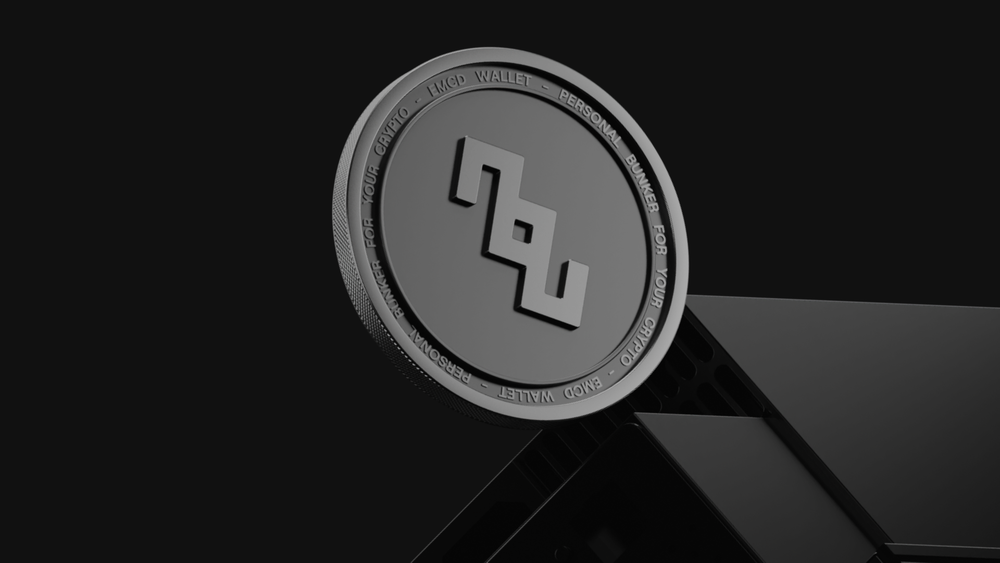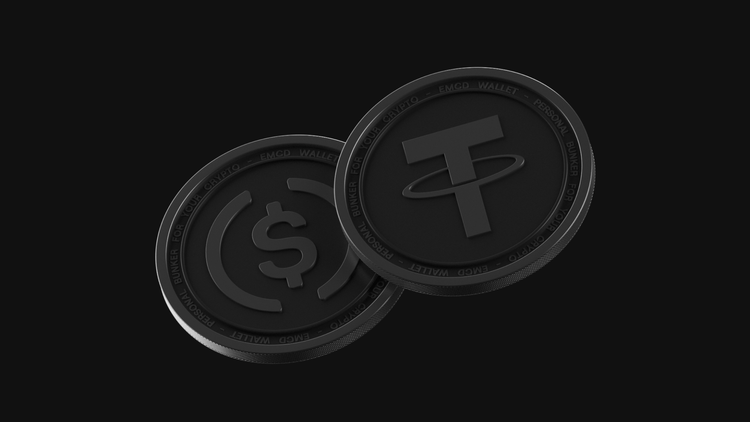How to Mine Fractal Bitcoin

Antpool and F2Pool — two of the largest Bitcoin mining pools — have introduced support for Cadence Mining, a mechanism that allows miners to earn Fractal Bitcoin tokens alongside traditional Bitcoin mining. This initiative reflects a growing trend to enhance the Bitcoin ecosystem with new use cases and revenue opportunities.
Fractal Bitcoin (FB) is a new blockchain project built around the Bitcoin ecosystem. It operates as a separate chain (sidechain), created by the team behind UniSat — a popular wallet supporting BRC-20 tokens and Ordinals. The Fractal network maintains compatibility with Bitcoin Core and processes blocks approximately every 30 seconds.
How Cadence Mining Works
Fractal Bitcoin uses a hybrid Proof-of-Work (PoW) model. Approximately one in every three blocks on the Fractal network is mined through merged mining with Bitcoin, while the other blocks are produced through standalone mining by independent participants.
With this setup, Bitcoin miners can simultaneously earn FB tokens using their existing hashpower. There is no need to change or upgrade hardware; the mining process is compatible with standard SHA-256 ASIC miners already configured for Bitcoin mining.
While the mechanism is sometimes compared to classic merge-mining (such as Dogecoin with Litecoin), Cadence Mining in Fractal Bitcoin operates slightly differently: it does not modify Bitcoin blocks but leverages Bitcoin’s existing hashpower through an auxiliary proof system.
Current Network Status and Tokenomics
The Fractal Bitcoin mainnet officially launched in September 2024. The total supply of FB tokens is capped at 210 million. Initially, about 50% of the supply was pre-mined and allocated to the project team, advisors, and early contributors. The remaining tokens will be gradually released through the mining process.
Today, more than 60 projects are already active on the Fractal platform, spanning decentralized finance (DeFi), NFT marketplaces, and token protocols. The ecosystem is expanding steadily as developers explore new use cases for Bitcoin-based assets.
Leading mining pools such as Antpool, F2Pool, Foundry, and Binance Pool currently participate in Fractal mining. These pools collectively contribute over 90% of Bitcoin’s total hashpower to the Cadence Mining process, ensuring robust security and consistent block production in the Fractal network.
Market Developments and Key Milestones
In June 2025, the Fractal network completed its third token unlock event. The majority of tokens are now circulating, with active trading on several decentralized platforms.
Major mining pools continue to scale their support for FB mining. Binance Pool recently added integrated support for FB, allowing participants to mine BTC and FB simultaneously through a unified interface.
The network processes blocks approximately every 30 seconds, offering significantly faster confirmation times compared to the Bitcoin mainnet. Developers are also working on cross-chain bridges to enable seamless asset transfers between Bitcoin and Fractal.
Growth of Hashrate and Decentralization
Fractal Bitcoin is experiencing significant growth in network security and decentralization, driven by its deep integration with the global Bitcoin mining ecosystem. The project leverages existing infrastructure to achieve robust security guarantees while fostering an increasingly decentralized auxiliary chain.
Fractal Bitcoin currently leverages over 90% of the global Bitcoin hashpower through merged mining. This level of participation ensures strong network security and positions FB as one of the most decentralized auxiliary chains linked to Bitcoin.
Ecosystem Expansion
More than 60 projects are live on the Fractal network. New DeFi protocols, decentralized exchanges (DEXs), and token bridges are expected to launch in the coming months. The developer community around Fractal is growing, supported by hackathons, grants, and infrastructure investments.
Economic Model for Miners
Cadence Mining offers a new revenue stream for Bitcoin miners. By mining FB alongside BTC, miners can improve their profitability without additional hardware investments. As energy costs rise and Bitcoin block rewards continue to halve, this model provides a valuable hedge against diminishing returns.
Risks and Challenges
Fractal Bitcoin’s reliance on merged mining means it depends on the continued participation of major Bitcoin pools. A significant reduction in Bitcoin hashpower or a shift in mining incentives could impact the stability of the Fractal network. Additionally, regulatory clarity around auxiliary tokens linked to Bitcoin remains an open question in many jurisdictions.
Opportunities for Growth
The project’s tokenomics include upcoming unlocks and treasury programs designed to incentivize ecosystem development. Cross-chain bridges will facilitate greater interoperability with the broader crypto landscape. If adoption of Bitcoin-based assets (such as BRC-20 tokens and Ordinals) continues to rise, Fractal Bitcoin could serve as a key infrastructure layer for scaling transaction throughput.
You can join the EMCD pool to start earning crypto today.
What You Need to Start Mining Fractal Bitcoin
Due to the nature of merged mining, Fractal Bitcoin (FB) can be mined effectively only with compatible ASIC miners that support the SHA-256 algorithm. Mining FB with a CPU or GPU is not feasible, as these devices cannot meaningfully participate in the merged mining process with the Bitcoin network. While it is theoretically possible to run a merged mining node on non-ASIC hardware, in practice all active pools and mining infrastructure are designed exclusively for ASIC miners.
Solo Mining FB
Fractal Bitcoin (FB) is not a standalone mineable network with an independent Proof-of-Work chain. FB is mined exclusively through merged mining with Bitcoin. The security of the FB network is entirely based on the hash power of the Bitcoin network. Therefore, it is not possible to mine FB as an independent activity or to run profitable CPU/GPU mining for FB. All mining operations must go through merged mining-enabled pools with ASIC hardware.
Setting Up a Mining Environment
The exact steps for setting up a mining environment depend on the specific hardware and software you are using. However, the general process typically includes the following:
- Log in to the control panel of your ASIC miner
- Navigate to the settings section (usually labeled Settings or Miner Configuration)
- Enter the address of the mining pool you want to connect to, along with the appropriate connection port
- Specify the wallet address where mining rewards will be sent. You can also include the miner’s name or worker ID here
- Reboot the configured ASIC to apply the settings
For quick configuration of multiple ASIC miners, you can create a batch file that includes:
- Pool URL
- Port number
- Login or miner ID
- Password (if required)
- Wallet address
You will receive detailed instructions for connecting your specific equipment to the pool after completing the registration form.
Choosing the Right Hardware and Software
For effective FB mining with modern ASIC miners, it is recommended to use:
- The official firmware provided by your ASIC manufacturer (such as Bitmain Firmware or Whatsminer Firmware)
- Mining pools that support merged mining and the Cadence Mining model, such as EMCD or Antpool. These pools typically offer detailed setup guides and may provide custom agents (such as the EMCD Cadence Agent) to optimize performance
- Tools like CGMiner or BFGMiner are not the primary solution for modern ASIC-based FB mining and are rarely used in professional operations today
Step-by-Step Guide to Mining Fractal Bitcoin
To begin mining Fractal Bitcoin, start by evaluating your budget, defining your goals, and developing a strategy to achieve them. Next, choose the appropriate hardware—this token requires ASIC devices, which must be purchased and correctly installed.
The mining room should meet specific technical requirements. Good ventilation, low humidity, and effective noise insulation are essential. The power supply should be stable, preferably set up through a dedicated circuit. Since ASICs consume significantly more electricity than household devices, it's important to ensure your wiring is safe and reliable.
The next step is to select a mining pool. Be sure to read the connection guides and tutorials carefully, as the setup process may vary between platforms. Once you’ve chosen a suitable pool, register on it and proceed with installing your equipment in the prepared space.
To manage your mining operation, you’ll need to install specialized software on a PC, which will serve as your control center. Configure the ASIC miners to connect to the selected pool and set the parameters for withdrawing your mining rewards.
At this point, the mining process begins—but your work doesn’t end here. Regular monitoring of mining efficiency is essential, and you should be prepared to adjust your strategy as needed.
Not all popular platforms support the Cadence Mining model, which allows dual mining of both BTC and FB. If you want to take advantage of this feature, make sure the pool you select offers dual mining support. Pools that currently support this model include EMCD, ViaBTC, Antpool, f2Pool, Kryptex, Solopool, Solofractal, Eazyfox-pool, OKminer, Molepool, and Zergpool.
Common Problems and Solutions
Mining Fractal Bitcoin does not involve any additional risks compared to mining other cryptocurrencies that use the SHA-256 algorithm. However, miners—regardless of the coin—may encounter a range of common issues. Here are the most frequent ones and how to deal with them:
Equipment overheating – ensure proper cooling using fans, air conditioning, or liquid cooling systems. Place ASICs in a well-ventilated room
High noise levels – use noise-insulated enclosures or install the equipment in a remote space such as a garage or a separate room
High power consumption – calculate power needs in advance and use energy-efficient power supplies. Consider using alternative power sources such as solar panels to reduce costs
Hardware malfunctions – perform regular maintenance, including cleaning dust, checking fans, and inspecting power supplies
Firmware and software updates – monitor official updates from the manufacturer, and only install firmware from verified sources
Unstable internet connection – use a stable wired internet connection and install an uninterruptible power supply (UPS) to protect against outages
Legal risks – check the legal status of mining in your jurisdiction. If required, register as a sole proprietor or legal entity. Be sure to report your income and pay applicable taxes
Cryptocurrency price volatility – build a cash buffer, follow a long-term investment strategy, and avoid panic selling when the market drops
Cybersecurity threats such as hacking attacks – protect your setup by configuring a firewall, using a VPN, and changing the default password on your router. Only use trusted mining pools, wallets, and exchanges. Never share passwords for your crypto wallets, exchange accounts, or ASIC control panels with anyone
Profitability of Fractal Bitcoin Mining
The actual profitability of FB mining depends heavily on the chosen mining pool, the pool’s reward distribution model, total network hash rate, and the miner’s share of the pool hash power. In real-world conditions, a typical ASIC miner with around 100 TH/s (such as the Antminer S19A Pro) will yield a few hundredths to a few tenths of an FB token per month when mining through pools such as EMCD or Antpool.
FB mining should therefore be viewed primarily as a long-term bonus asset, rather than as a main source of mining income. The core profitability comes from Bitcoin mining, while FB tokens are accumulated as an additional reward through the Cadence Mining model.
Tips to Improve Mining Efficiency
To boost the efficiency of FB mining on ASICs, you can:
Regularly update the firmware — this helps increase hash rate and improves the stability of your ASICs
Use overclocking cautiously — when tuning your ASIC, consider its specific characteristics. Sometimes it’s more profitable to lower the frequencies to reduce power consumption, even if it means a slight drop in hash rate
Maintain a stable temperature — overheating can significantly shorten the lifespan of your ASIC
Monitor mining pool fees and switch pools if necessary
Find access to cheap electricity — consider installing solar panels or using a dual-rate electricity meter with lower night tariffs to mine primarily at night
Use automation tools to manage and optimize mining operations
Avoid selling mined tokens and Bitcoins immediately — watch market trends closely and sell only when prices are high
Consider both hash rate and energy efficiency when choosing hardware
Energy and Environmental Issues
Mining is an energy-intensive activity. For example, an ASIC like the Bitmain Antminer S19A consumes about 3.25 kW, while high-end hardware such as the Bitmain Antminer S21E XP Hyd 3U uses more than 10 kW. To keep mining profitable and safe, you need to:
Secure access to affordable electricity
Calculate your farm’s total power consumption and ensure your machines and wiring can handle continuous operation at this load
Provide adequate cooling for the equipment
On a global scale, cryptocurrency mining negatively impacts the environment due to its high energy consumption. Many mining farms operate in regions where electricity comes from coal and other fossil fuels, contributing to significant carbon dioxide emissions.
The increasing mining difficulty causes ASICs to become obsolete relatively quickly, leading to growing electronic waste. Environmental issues such as heat pollution, noise, and excessive resources use further harm ecosystems. Although renewable energy is sometimes utilized in mining, the activity remains energy-intensive and environmentally damaging.
As of 2025, total electricity consumption for cryptocurrency mining exceeds 100 terawatt-hours (TWh) per year — more than the average energy usage of countries like Belgium, Finland, or Kazakhstan. However, mining accounts for less than 0.5% of global electricity production. While mining now consumes more power than the residential sector, global industry still uses far greater resources and causes significantly more environmental damage.
Safety Measures for Miners
To reduce risks and avoid losses, it is important to pay attention to the following aspects:
- Fire Safety — calculate power consumption accurately, use appropriate wiring and automatic circuit breakers, ensure proper ventilation, and monitor the temperature of all devices. It’s advisable to set ASICs to automatically shut down if they overheat
- Legal Aspects — study the mining regulations and tax requirements relevant to your country and region
- Cybersecurity Risks — protect your local network from hacking, use trusted wallets, exchanges, and mining pools. Always follow basic cybersecurity best practices
- Financial Management — monitor exchange rate fluctuations closely and respond promptly. Build a cash buffer to weather market volatility and avoid impulsive decisions. Reinvest in your mining farm to stay ahead of rising mining complexity
- Physical Security — protect your farm and income from scammers, thieves, and extortionists. Avoid sharing financial details with outsiders. Install alarm systems and video surveillance for your mining setup
- Health Considerations — mining equipment generates significant noise and heat. If installed in your living space, it can affect your health and sleep quality. It’s best to dedicate a separate, well-ventilated, and sound-insulated room for ASICs
To securely store your mined BTC and FB, use reliable wallets that support connection to the Fractal Bitcoin mainnet. Some of the recommended options include:
- UniSat
- OKX Wallet
- Fractald, a local wallet available for Windows, Linux, macOS, and other popular operating systems
You can also keep tokens directly in the account of the exchange where you plan to trade them, but this approach carries significantly higher risks.
Alternatively, you can use the convenient multi-currency custodial wallet offered by the EMCD platform. It provides strong security guarantees and allows you to quickly exchange FB tokens for other popular cryptocurrencies.
Legal and Regulatory Considerations
As of 2025, cryptocurrency mining in the United States is legal at the federal level, but regulation and enforcement vary from state to state. Both individuals and legal entities can mine Bitcoin, Fractal Bitcoin (FB), and other cryptocurrencies, provided they comply with applicable tax and energy regulations.
Mining is treated as a form of income-generating activity. According to IRS guidelines, mined coins must be reported as taxable income based on their fair market value at the time of receipt. If the assets are later sold, capital gains tax may also apply. For commercial-scale mining operations, registration as a business entity (such as an LLC or corporation) is typically required, along with proper bookkeeping and tax reporting under standard accounting rules.
Some states, including Texas and Wyoming, have adopted mining-friendly policies, offering access to cheap electricity and regulatory clarity. Others, such as New York and California, have imposed restrictions or moratoriums due to environmental or grid-capacity concerns.
Currently, there is no federal licensing requirement for miners, but local permits may be needed depending on energy usage and the zoning classification of the mining facility. In some areas, mining activity is regulated similarly to industrial operations.
Mining is generally prohibited for individuals or entities involved in utility regulation violations, energy reselling without a license, or those with criminal convictions related to financial fraud or cybersecurity offenses. Additionally, certain regions may limit mining due to energy shortages or infrastructure strain.
To legally mine in the U.S., you should:
- Ensure compliance with local zoning and energy regulations
- Register your activity as a business if operating at commercial scale
- Maintain detailed tax records and report mining income accurately
- Consult a legal advisor, especially if your mining operation spans multiple states
Beginners often find it easier to mine through established mining pools. Pools typically assist with equipment setup, income distribution, and can offer guidance on regulatory obligations.
Other countries may have different rules and requirements for Fractal Bitcoin mining. Before purchasing mining equipment, it is recommended to consult legal professionals experienced in crypto law and digital asset regulation.
Prospects of Fractal Bitcoin Mining
As of summer 2025, the market price of Fractal Bitcoin (FB) remains relatively low. However, analysts and industry experts continue to view this token as a promising long-term investment asset. A key driver of future growth is the increasing integration of FB into the decentralized finance (DeFi) ecosystem. Several DeFi platforms have already begun incorporating FB into their smart contracts and using it as a liquidity asset—laying the groundwork for a potential surge in demand.
Forecasts suggest a possible sharp increase in FB’s market capitalization in the second half of 2025, particularly if a major protocol upgrade is released or if the token is listed on leading centralized exchanges. So an early entry into mining is one of the most rational strategies. Begin accumulating FB now while production costs are low and hold the tokens in anticipation of future price growth—this is often referred to as a “MINE-and-HODL” strategy.
Unlike many newer, overhyped tokens that often lose value shortly after launch, Fractal Bitcoin is positioned with a more stable development model. Another major advantage is its support for dual mining technology. While mining FB, you also mine classic Bitcoin. This reduces risk and ensures a stable daily income, making FB mining a source of both short-term revenue and long-term investment opportunity.
For those who take a forward-looking approach and understand the principles of managing digital assets, Fractal Bitcoin mining already presents a compelling opportunity to secure a position before mass adoption and a potential price breakout.
FAQ
What’s the difference between Fractal Bitcoin and traditional Bitcoin?
Fractal Bitcoin (FB) is a second-layer network built on top of the original Bitcoin blockchain, launched in 2024. Unlike BTC, it offers faster transaction confirmation (~30 seconds per block instead of 10 minutes), lower fees, and full support for smart contracts and token standards like Runes, Ordinals, and BRC-20. Thanks to the Cadence Mining model, FB tokens can be mined in parallel with mainnet Bitcoin (BTC).
Can I mine Fractal Bitcoin on my personal computer?
In theory, you can try mining FB on a PC, but due to the use of the SHA-256 algorithm, it’s not economically viable. The earnings would be negligible and unlikely to cover your electricity costs. Efficient FB mining requires specialized ASIC hardware and dedicated infrastructure.
How much can I earn from mining Fractal Bitcoin?
Currently, mining FB alone brings almost no profit—around 3 cents per month per ASIC operating at 100 TH/s. The main income (~$158/month) comes from simultaneous mining of regular Bitcoin. FB mining is mostly pursued as a long-term investment strategy, banking on future growth of the token’s value.
Which mining pools support Fractal Bitcoin?
As of summer2025, approximately 20 major global pools support FB mining. The most trusted and widely used ones include:
- EMCD
- ViaBTC
- Antpool
- f2Pool
- Kryptex
- Solopool
- Solofractal
- Eazyfox-pool
- OKminer
- Molepool
- Zergpool
Is Fractal Bitcoin mining legal in my country?
As of 2025, mining FB and other crypto tokens in the USA is legal. To legally mine in the U.S., you should:
- Ensure compliance with local zoning and energy regulations
- Register your activity as a business if operating at commercial scale
- Maintain detailed tax records and report mining income accurately
- Consult a legal advisor, especially if your mining operation spans multiple states
But each country has its own regulations. Mining is generally legal in Canada, Japan, and most EU countries. Be sure to consult local legal experts or regulatory bodies to verify compliance in your jurisdiction.
How do I safely store mined Fractal Bitcoin?
To securely store your mined BTC and FB tokens, use trusted wallets that support the Fractal Bitcoin mainnet. Some recommended options include:
- UniSat – a convenient web wallet with support for FB and NFTs
- OKX Wallet – a versatile multi-platform wallet suitable for both holding and trading
- Fractald – a fully local, privacy-focused wallet available for Windows, Linux, macOS, and more
You can store tokens on an exchange account if you actively trade, but this carries significant risk—hacks or account freezes could result in permanent loss of access.
A safer alternative is the EMCD custodial multi-currency wallet, which combines convenience with robust security, account recovery options, and fast token swaps.
For maximum security, keep most of your funds in local or hardware wallets, and only leave the amount you plan to use short-term on exchanges.




